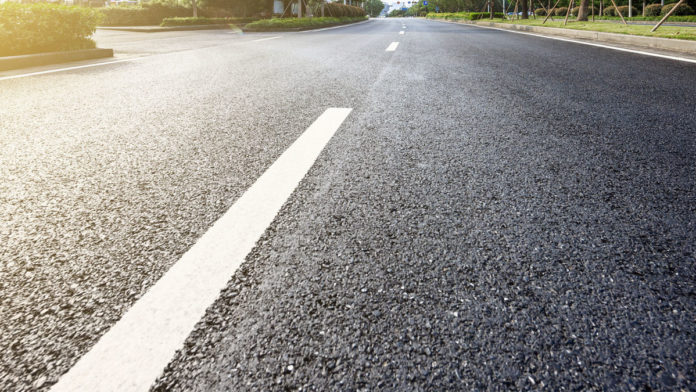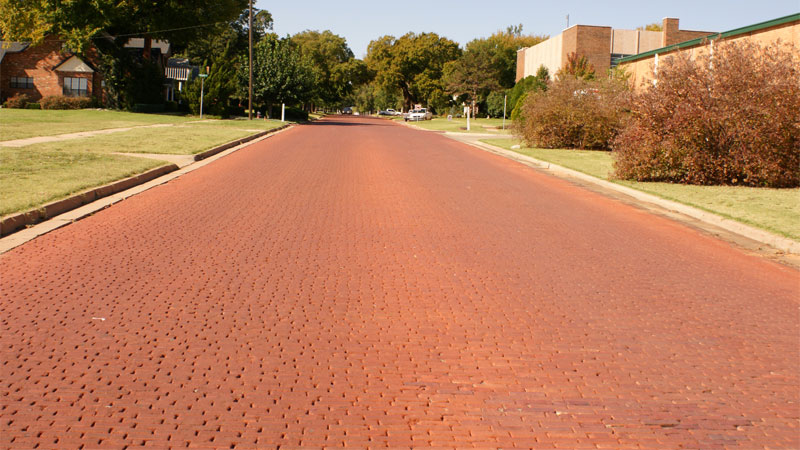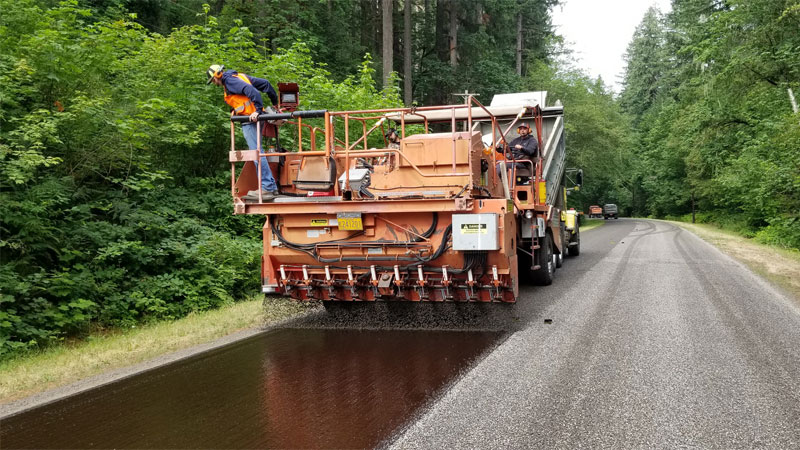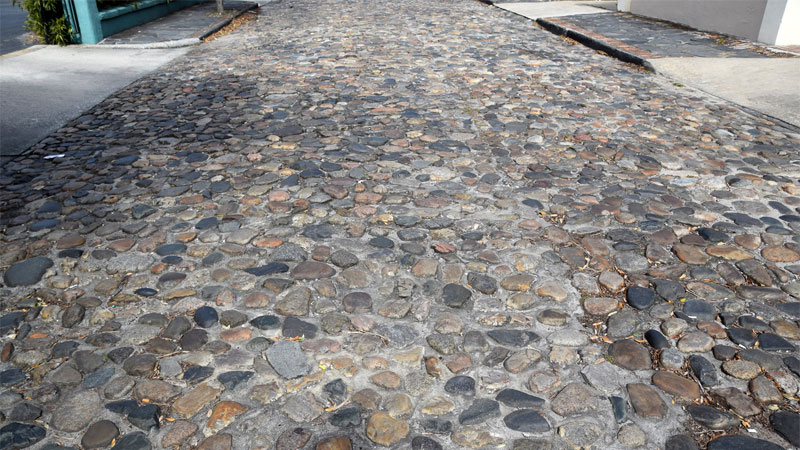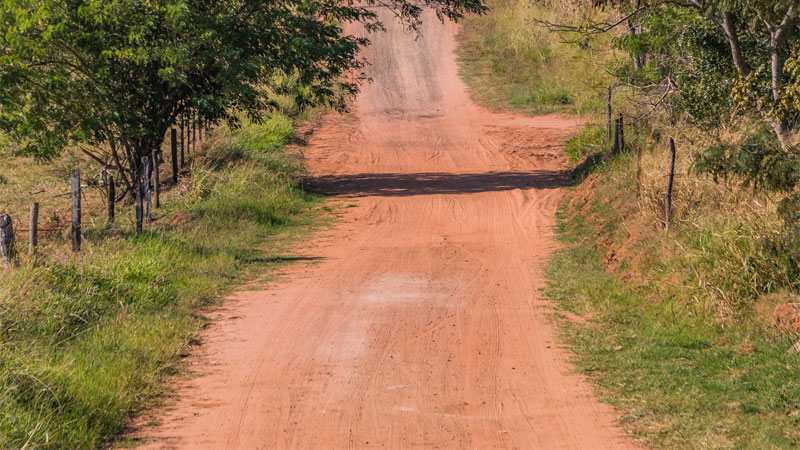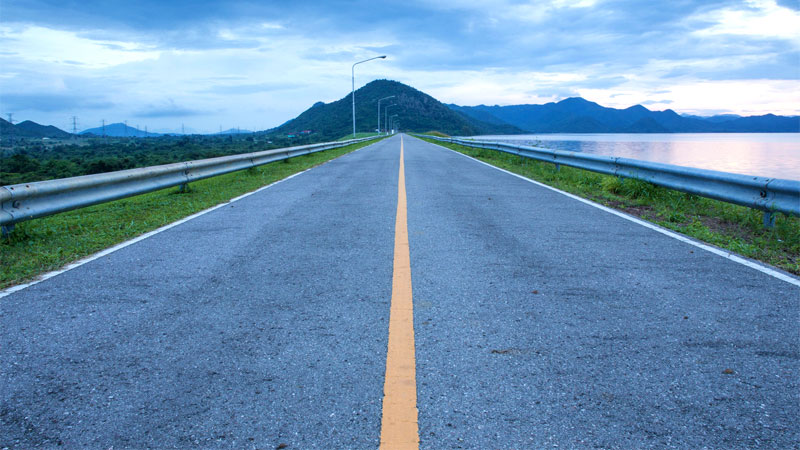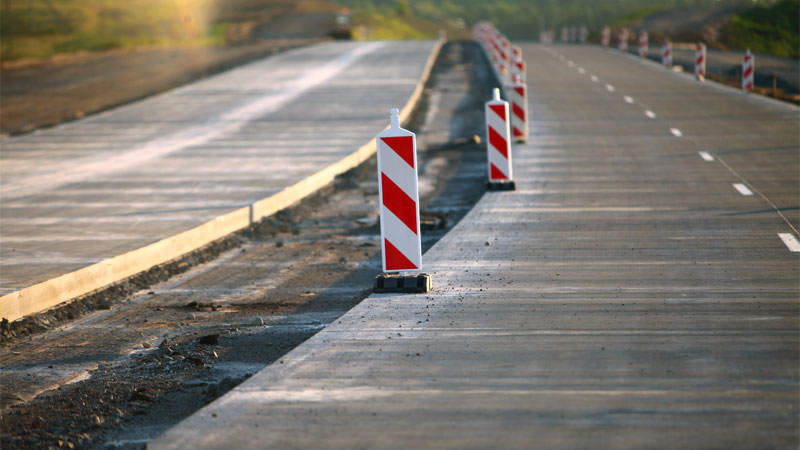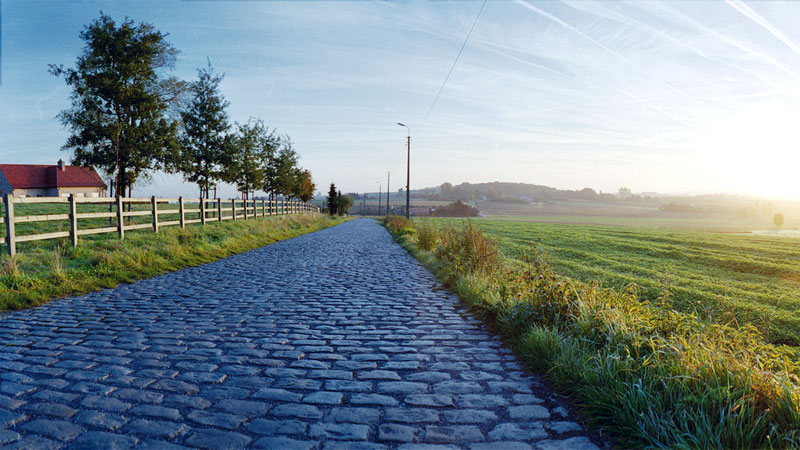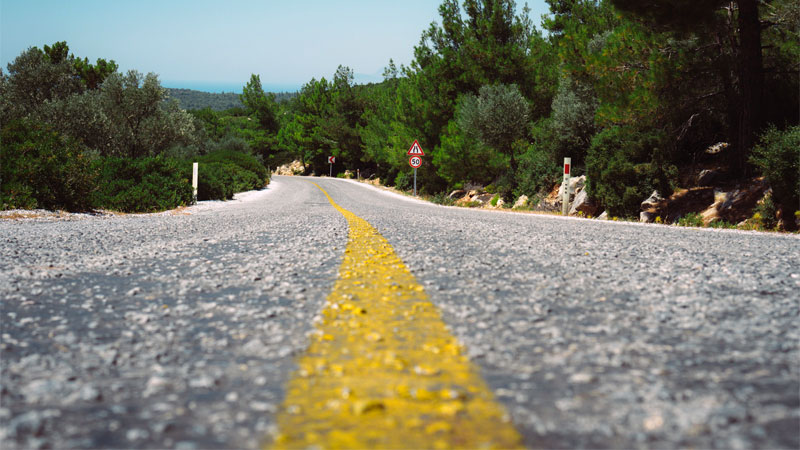There are many things we see in our day to day life but rarely give much thought to. This is a shame, because what we take for granted today was often not even imagined throughout most of history.
One really good example of this is roads. We walk on them, drive on them, and sometimes curse at them because of all the traffic.
But roads are among the oldest inventions Mankind has made, and how we surface our roads has really changed a lot over thousands of years. Here are 11 types of road surfaces spanning the length of human history. Some you see daily, while others are extremely rare sights these days.
Types of Road Surfaces
1. Asphalt
This type of road surface has many names, such as blacktop, pavement, and even tarmac (mainly in the UK, although actual tarmac is different). This type of macadam road uses asphalt as a binding agent, mixed with an aggregate, poured onto a roadbed, levelled, and steamrolled.
These are some of the most common road surfaces in the US, although you might be surprised to know they’re not all the same. The asphalt and aggregate mix can be created in a number of ways, each of which can lead to different effects. Some produce less noise than others, while some are more durable.
When working on a road, the construction team must first determine how much traffic will be using the road, as well as any noise concerns, then choose the mixture that’s best for the job. Asphalt has largely replaced tarmac and other older road types and is often laid directly on top of older cobblestone or brick roads.
2. Brick
Brick roads have been around since Roman times and can still be found in many rural areas or even some cities, especially in Europe. When placed on an appropriate substrate, the bricks form a durable road surface that’s easy to maintain.
When performing work on underground pipes, the bricks can simply be removed and refitted afterwards. Damaged bricks are also easy to replace and there’s enough room for the bricks to expand and contract with the weather, further extending the life of the road.
However, while these roads can put up with a lot of abuse and are generally quite attractive, they also freeze faster, making them less safe in the winter. They can also be noisier than modern surfaces.
Ironically, while many brick roads were covered by asphalt and concrete, many cities are now reverting to brick along stretches of road or intersections to slow traffic and beautify the area.
3. Chipseal
This road surface is actually a means to cover an existing damaged surface, rather than replacing it. As a result, chipseal saves a lot of time and money, although it can increase the amount of noise caused by traffic.
A base layer of tar or asphalt is placed on the existing road surface, then a layer of evenly spread fine aggregate is added on top. Heavy rubber-tired rollers are then used to push the aggregate into the asphalt. Additional layers of asphalt and aggregate may be added.
Additionally, these surfaces may be given a top layer to further seal it, known as a fog seal.
4. Cobblestone
Cobbles are stones that measure between 2.5 and 10.1 inches (with some variations depending on the classification system used), hence the name for these traditional roads.
A cobblestone road consists of cobblestones placed in sand or cement. They’re extremely durable, with many roads still being used hundreds of years later. They’re an easier surface for horses to grip than asphalt or concrete and cobblestone roads that use sand won’t crack due to ground movements or sudden temperature changes.
While they’re noisy to drive upon, this continues to be considered a safety feature, warning children and pedestrians of oncoming traffic they might otherwise not have noticed.
5. Dirt
The most basic road surface out there, dirt roads are still used to this day. Their functionality depends largely upon the type of traffic going over them, as narrower wheels can eventually leave ruts.
Dirt roads can become quite muddy in the rain, which can lead to vehicles getting stuck if the road surface isn’t compacted enough to bear the vehicle’s weight.
6. Gravel
This useful aggregate is also one of the oldest known types of road covering, dating back at least to the bronze age. Traditionally, these roads are created by digging a trench for the road, possibly with French drains added.
Large stones are laid in the bottom and compacted, then additional layers are added and compacted, each one containing smaller stones than the one below it. The uppermost layer of tiny stones forms a firm, durable surface.
These roads are most often seen out in the countryside where there’s little traffic.
7. Macadam
While this term technically applies to a construction method invented by John Loudon McAdam around 1820, it’s worth noting here because the surface isn’t always covered.
In its purest form, macadam is a road constructed of multiple shallow layers of crushed stone. Each layer is thoroughly compacted and partially held together by the dust created from the stone. While the road may be considered finished at this point, it’s often covered with a top layer of cement or other paving material.
The first macadam road in the US was created in 1823 in Maryland, and macadam roads can still be found in the US to this day.
Because stones in the lower layer were no bigger than three inches and the top two inches of road contained stones no bigger than ¾ inches in diameter, the roads held together as though they were made of solid stone.
They also had a central elevation of only 3 inches, making them quite level while still allowing water to flow off to the sides.
8. Portland Cement Concrete
One of the most common road surfaces in the US, cement roads are a mix of Portland cement, coarse aggregate, sand, and water. Sometimes fly ash or other substitutes are used for Portland cement to help reduce costs.
Concrete roads are more durable than asphalt, reflect light better, and reduce fuel consumption. They are also more durable and require less maintenance than asphalt for driveways, although the upfront cost may be more.
Many say that there are four guarantees when it comes to concrete:
- It will harden
- It will crack
- It will never get stolen
- It will never catch on fire
9. Sett
Usually made of granite, setts are rectangular cut stones sometimes referred to as Belgian block. Road surfaces made using setts are a cross between brick and cobblestone, having the visual appeal and easy maintenance of brick with the superior durability and grip of cobblestone.
Dating back to Roman times, set roads are still in use today and considered quite decorative. You can even find sett roads in full use in many major US cities.
10. Tarmac
Chances are, you’ve heard this term being incorrectly used to describe runways and other road surfaces. However, tarmac is actually short for tarmacadam and is a type of macadam road.
It came about as the result of an accident near an ironworks where a barrel of tar had spilled onto the macadam road and someone attempted to cover it up by pouring slag on top. When Edgar Purnell Hooley saw this smooth bit of road in 1901 Derbyshire, he instantly knew he was onto something and created a patent in 1902.
The term tarmac was trademarked by Hooley’s brand new company, Tar Macadam Syndicate Ltd. in 1903 and the rest is history.
Tarmac uses tar mixed with small amounts of pitch, resin, and Portland cement. This mixture is then blended with the aggregate material, poured, and steamrolled. The method was later updated to substitute bitumen for the coal tar.
Tarmac was cheaper and faster to construct than regular macadam roads, and they were also far more durable. Today, not a lot of tarmac roads remain, having been supplanted by asphalt. However, the name lives on because of its early association with both roads and runways.
11. Wood Plank
Of all the roads we’ve discussed, this might be the most bizarre, as well as one of the oldest. Plant roads were exactly what they sounded like – roads made out of wooden planks.
While some were merely laid flat on ground prone to becoming soft, others had a much more familiar appearance. Such wooden roads were built along squared wooden beams known as stringers, with deck planks running between them.
In some instances, long plants known as running planks ran along the length of the road tio give the middle extra support. On the outdoor edge of the deck planks ran another pair of beams known as the bull rail.
The resulting road closely resembled railroad tracks. Because the spacing between deck planks, as well as their thickness, could vary, the resemblance is greater with some wood roads than others.
Wooden roads found a very brief US boon in the mid-1840s, but lost steam by around 1850, with only a few additional roads being built in the following few years. Today, a few wooden roads are still in use in Canada, but US examples are almost nonexistent.
Read About These Famous Driver’s Roads:

